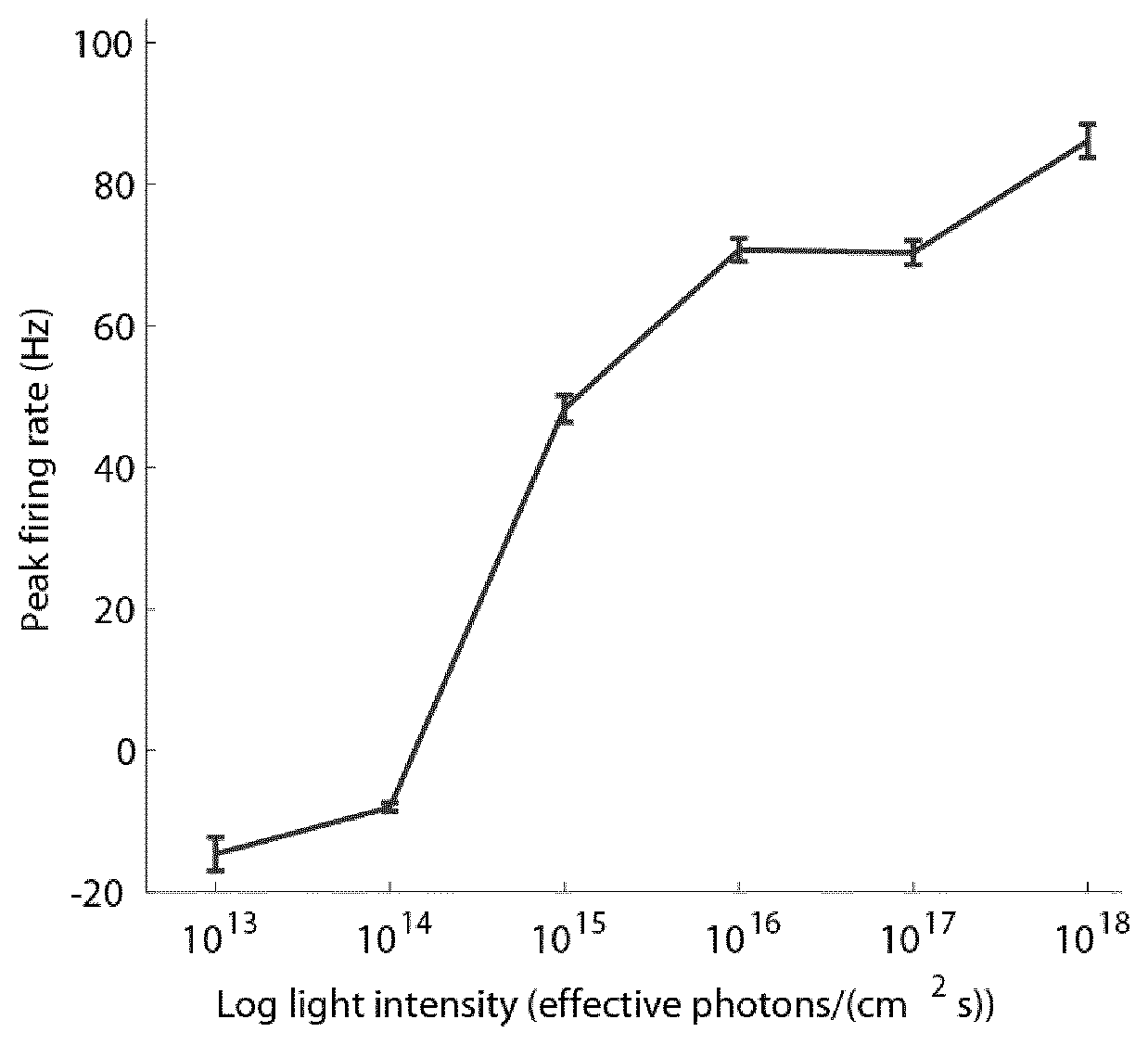Therapeutical tools and methods for treating blindness by targeting photoreceptors
a technology of photoreceptors and therapeutic tools, applied in the field of blindness treatment, can solve the problems of degeneration of photoreceptors, disfunction of the retina, and millions of people's blindness worldwid
- Summary
- Abstract
- Description
- Claims
- Application Information
AI Technical Summary
Problems solved by technology
Method used
Image
Examples
examples
[0114]Targeted expression of CatCh in cones from rd1 mice (mice homozygous for the rd1 mutation have an early onset severe retinal degeneration) was accomplished by the use of the cell-specific promoter mouse cone arrestin 3 (mCar) (Busskamp, 2010). This was previously shown to selectively drive expression in a high percentage of rd1 cones (Busskamp, 2010). CatCh, fused to enhanced green fluorescent protein, EGFP, was packaged inside AAVs and was injected into the subretinal space of rd1 mice. All mouse injections were performed between P28 and P39. EGFP only expressing AAVs were used as controls throughout the study. The ability of CatCh transfected rd1 cones to convey information to downstream retinal ganglion cells (RGCs), the output neurons of the retina, was measured on multi-electrode arrays (MEA). Full field white light CatCh MEA recordings were performed between P79-P114. In CatCh transduced retinas robust RGC ON responses, both transient and sustained, were seen, starting a...
PUM
| Property | Measurement | Unit |
|---|---|---|
| Tm | aaaaa | aaaaa |
| temperature | aaaaa | aaaaa |
| temperature | aaaaa | aaaaa |
Abstract
Description
Claims
Application Information
 Login to View More
Login to View More - R&D
- Intellectual Property
- Life Sciences
- Materials
- Tech Scout
- Unparalleled Data Quality
- Higher Quality Content
- 60% Fewer Hallucinations
Browse by: Latest US Patents, China's latest patents, Technical Efficacy Thesaurus, Application Domain, Technology Topic, Popular Technical Reports.
© 2025 PatSnap. All rights reserved.Legal|Privacy policy|Modern Slavery Act Transparency Statement|Sitemap|About US| Contact US: help@patsnap.com

